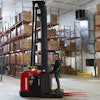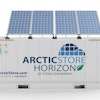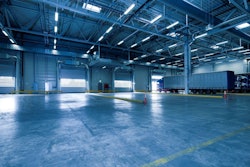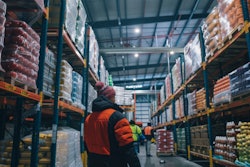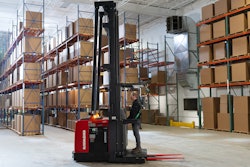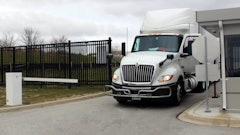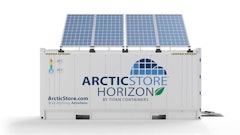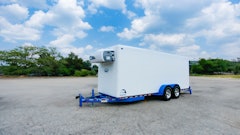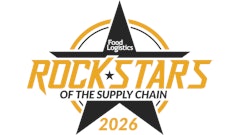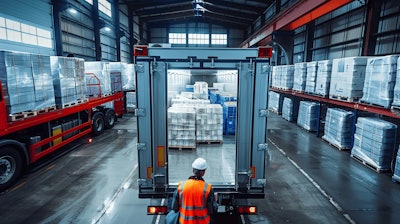
Cold storage is the backbone of the food and beverage industry, supporting modern logistics for the quick-moving supply chain. The pandemic marked a turning point in the cold storage sector, which is now experiencing unprecedented growth driven by emerging technology, evolving consumer behavior, and economic pressures.
Looking ahead to 2025 and beyond, the cold storage industry faces both challenges and opportunities. Outdated infrastructure, surging demand, and rising costs will require food and beverage companies to adapt quickly, but those who adopt new technologies, investments, and strategies can discover new pathways to growth and resilience. Here are five key trends shaping the future of cold storage.
1. Changing consumption patterns
Consumer preferences for fresh, healthy, and locally sourced food are reshaping the cold storage industry. Concepts such as “farm-to-fork,” organic products, and meal kits gained traction even before the pandemic and the demand for fresh, nutritious options has only accelerated as more people prepare meals at home.
Cold storage facilities are adapting to handle a broader range of fresh and perishable goods. Operators are expanding capacity for items like fresh produce, dairy, and meal kits, which require precise temperature control. These trends also intersect with growing consumer expectations around food safety and sustainability, prompting companies to prioritize transparency and efficiency in their logistics networks.
2. Automation, sustainability and energy efficiency
Automation and sustainability increasingly overlap in this industry-wide transformation. Consumers increasingly expect faster delivery times for fresh and frozen goods, driving the need for facilities that reduce transit times and ensure product quality. However, industrial land in cities with high demand for e-commerce and online grocery is scarce and expensive, pushing food and beverage operators to explore innovative solutions.
Cold storage operators across the supply chain are investing in urban and suburban micro-fulfillment centers to meet the growing demand for speed and quality. These facilities often integrate technologies such as automated picking systems and advanced temperature controls to maximize efficiency and reduce costs. Additionally, investments in carbon reduction technologies such as LED lighting, solar integration, and sustainable materials ensure these modern facilities meet both operational and environmental goals.
Prioritizing automation and energy efficiency can help food and beverage operators remain competitive in the following ways:
· Cutting down on energy costs. Greener practices and energy efficiencies can reduce energy costs associated with labor and utilities by almost 50%.
· Efficiency in modern buildings. The upfront cost of investing in new construction, insulated docks, and LED lighting systems can often provide long-term efficiency and cost savings that improve cold storage facilities.
· Automation for competitive advantage. Adoption of automation is increasing in cold storage facilities to address labor costs and shortages in the warehouse industry.
Facilities that prioritize these advancements are better positioned to meet growing consumer expectations and regulatory pressures while maintaining competitive costs.
3. Speculative construction in the cold storage space
As demand for cold storage continues to rise, speculative construction is reshaping the market. Developers are building state-of-the-art cold storage warehouses without pre-leased tenants, betting on future demand to attract operators.
Speculative builds attract developers not only because of their ability to meet immediate demand but also for their high return on investment, as modern facilities typically command premium rents in the growing market. High-growth regions like Texas, Florida, and Georgia, lead the way in new construction, accounting for 47% of all cold storage developments since 2020. These projects not only expand capacity but also ensure the industry remains agile to shifting market demands.
4. Investing in cold storage
Cold storage has emerged as one of the most attractive real estate sectors, thanks to its stability and long-term growth potential. High barriers to entry — such as the complexity of facility design and operational expertise — and the resilience of the sector, which has proven critical during economic disruptions, make it a niche market with significant upside.
Since 2019, average asking rents for cold storage facilities have risen by more than 96%. This dramatic increase reflects the scarcity of modern facilities, and the critical role cold storage plays in global supply chains. Additionally, aging infrastructure poses a major challenge. The average cold storage facility is 42 years old, and more than half are over 30 years old.
Investors are capitalizing on this opportunity, funding speculative builds and modernization projects to help food and beverage operators scale and meet rising demand. Many operators are repurposing existing warehouses to meet modern demands. However, retrofitting these facilities requires substantial investment in technology and design to achieve the efficiency and capacity of newer builds. This influx of capital is expected to further accelerate innovation and expansion within the industry.
5. The growing importance of the last mile
Delivering temperature-sensitive goods to consumers’ doorsteps remains one of the most challenging aspects of the cold chain. Last-mile logistics require precision and speed to ensure products like fresh groceries and meal kits arrive in peak condition.
Food and beverage operators are leveraging innovative strategies to overcome these challenges, including:
· Establishing collaborative warehouse spaces that serve multiple operators to optimize delivery networks.
· Repurposing older facilities with modern cold storage technologies to expand coverage.
· Leveraging partnerships with 3PL providers to streamline delivery to end consumers.
These approaches help optimize delivery routes, improve network efficiency, enhance the reliability of last-mile services, and ensure the quality of perishable goods. As consumer expectations for convenience and quality grow, last-mile optimization will remain a key focus for the cold storage sector.
Shaping the future of cold storage
The cold storage industry is at a pivotal moment, where surging demand, technological innovation, and shifting economic forces are driving rapid change for food and beverage companies. Trends like evolving consumption patterns, automation, sustainability and energy efficiency, speculative construction, targeted investment, and last-mile optimization are redefining how companies operate in this dynamic landscape.
The sector’s resilience reflects its indispensable role in modern supply chains. As we move into 2025 and beyond, companies that adapt quickly and strategically will lead the next era of logistics, shaping a future where efficiency, sustainability, and innovation are paramount.
